Do you have an annoying squeaking sound coming from your loose running boards, and you want to know how to make it stop? You’ve come to the right place, for we have researched this question, and we have the answer for you.
Here are the simple steps to fix the loose running boards on your truck:
- Remove the running board and the mounting bracket.
- Attach weatherstripping on the mounting bracket.
- Reattach the mounting bracket to your truck.
- Reattach the running board.
The steps above summarize how to fix the loose running boards on your truck. The detailed steps can be found in the succeeding sections. Read on!
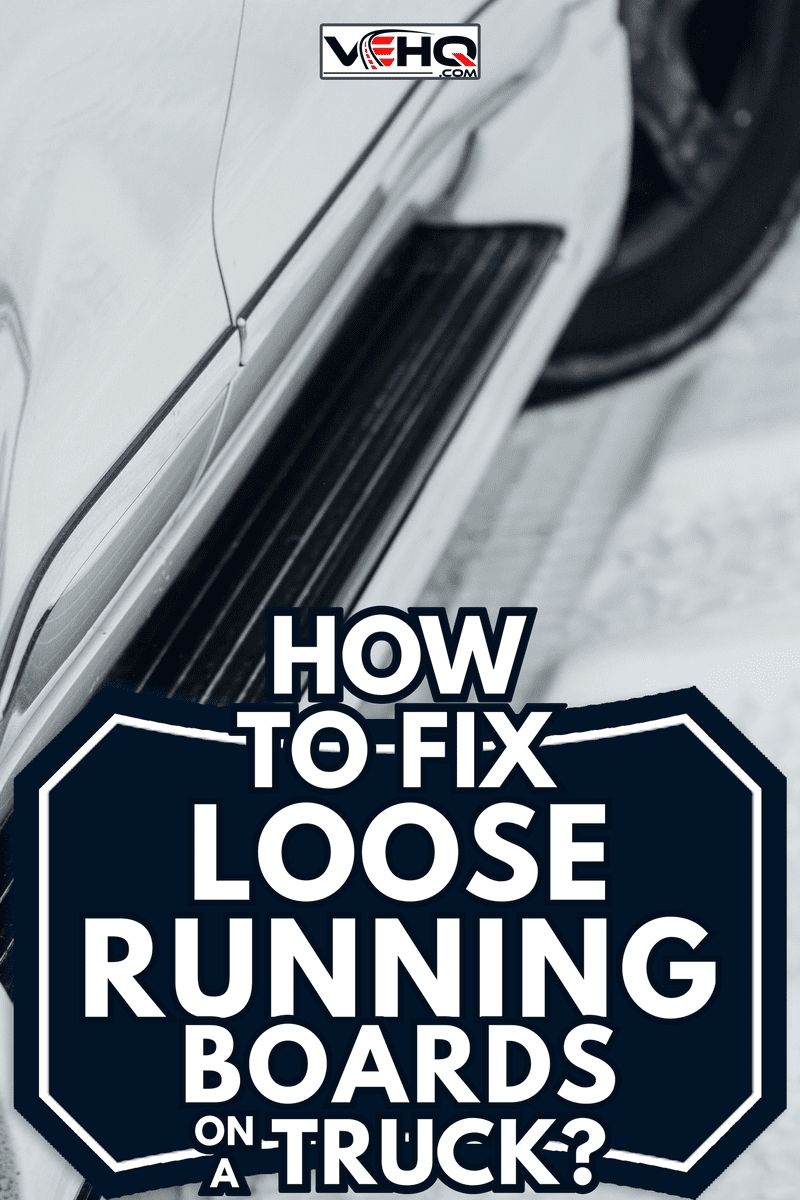
How to fix loose running boards on a truck?
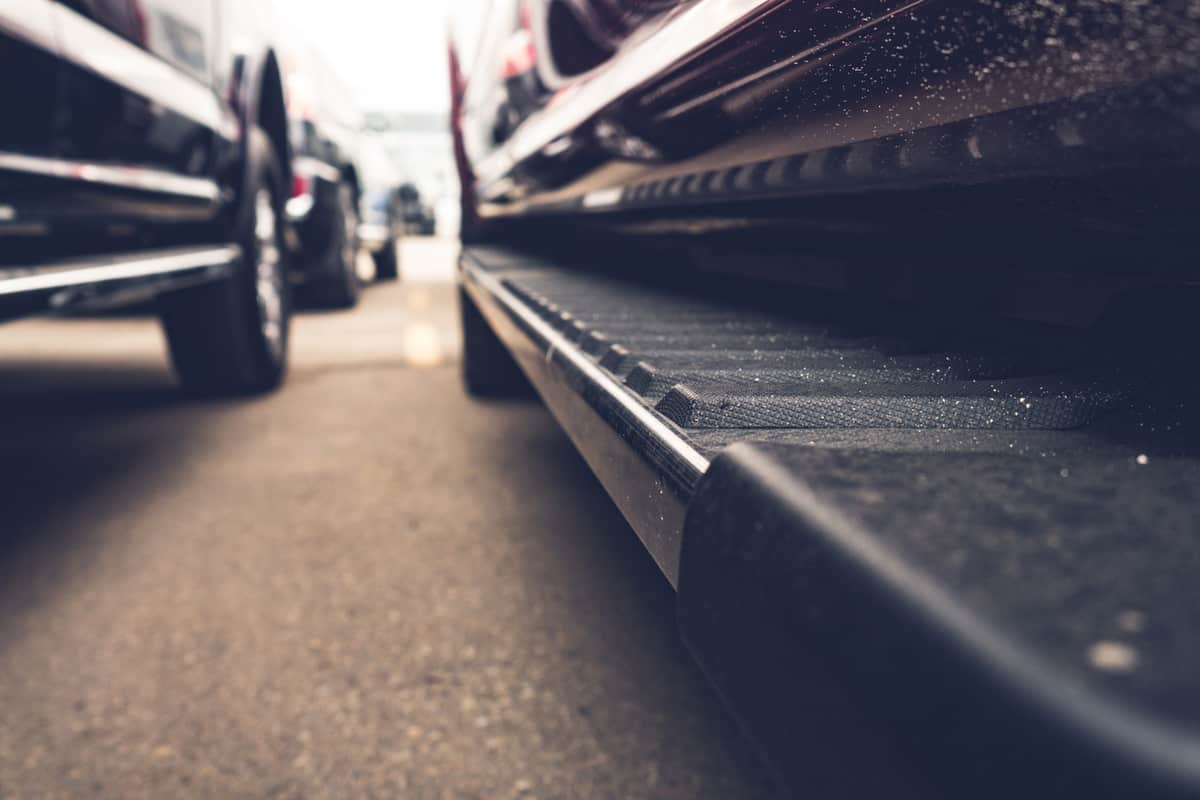
Below are the tools and materials that you need, followed by detailed steps to fix loose running boards on your truck.
Materials needed
- Socket wrench
- 3/4-inch thick self-adhesive weatherstripping
- Clean water
- Mild liquid soap or car shampoo
Removing the running board
- Detach the running board from the mounting brackets using a socket wrench. Set aside the bolts that you’ve removed.
- Lift the running board from the mounting brackets and set it aside.
- Unscrew the mounting brackets using a socket wrench. Some trucks have three mounting brackets on each side. Remove all of them and set aside the bolts.
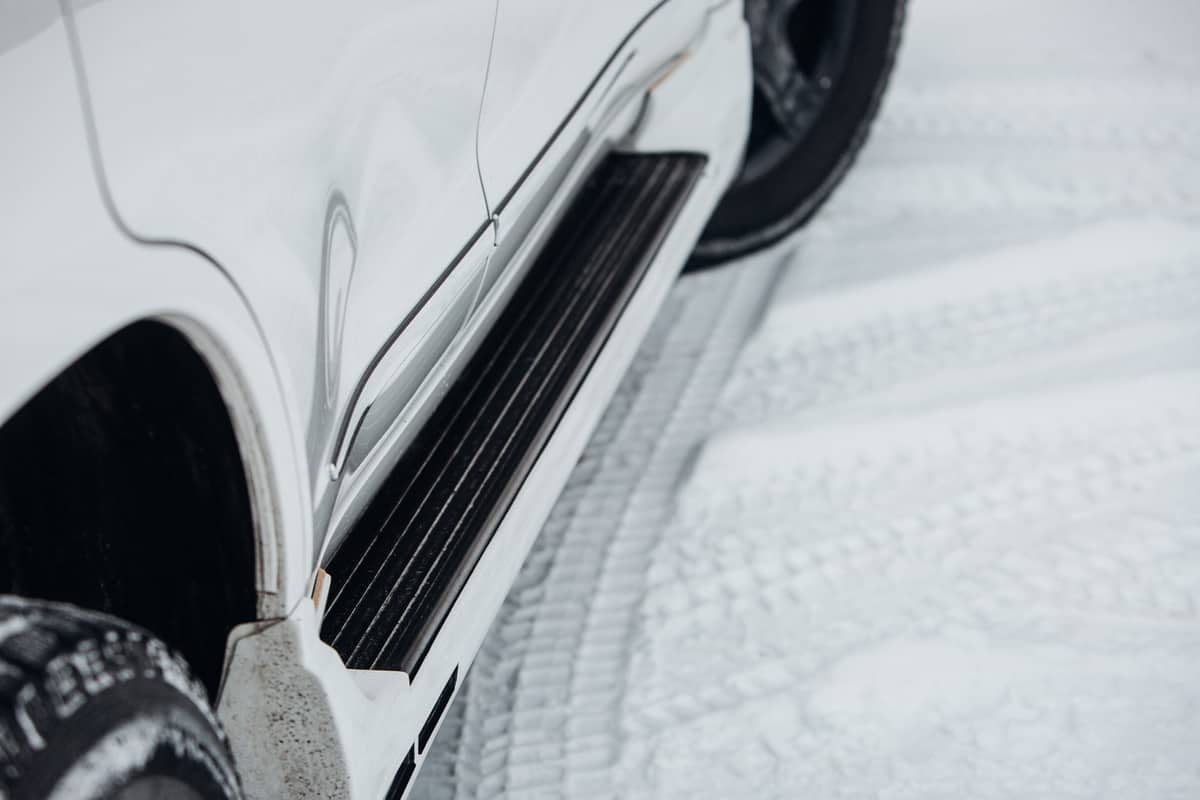
Cleaning Old Mounting Brackets
Clean the mounting brackets with mild soap and water. Alternatively, you can use car shampoo to clean the mounting bracket and remove any mud and rust.
There will be an old or dried rubber strip above the bracket in some truck models. Remove this old rubber strip and clean the area thoroughly. The mounting brackets need to be clean so that the weatherstrip will attach better to the surface. Wipe to dry.
There will be two sets of holes on the mounting brackets. Two to bolt it to the underside of your truck and two more to secure the running board.
Attaching Weatherstripping
- Get a self-adhesive weatherstrip that is three-quarters of an inch thick and cut one piece. Attach this piece above the bracket that goes to your truck, replacing the old rubber strip. If one more weatherstrip can fit here, add one more.
- Cut two lengths of weatherstrip that will fit between the two screws below the bracket. These two strips should be parallel to the first weatherstrip.
- Attach these two weatherstrips between the holes you use to bolt in the mounting bracket to your truck. All three weatherstrips should end up between the mounting bracket and your truck.
- Cut four more weatherstrips that will fit the area covered by the holes for the running board. The length of the weatherstrip should be long enough to include the diameter of the two holes.
- Attach the weather strips perpendicular to the first set of weather strips. There should be two on both sides of the two holes for the running board. The weatherstrip should end up between the mounting bracket and the running board.
Do the same thing for all the other mounting brackets on both sides of your truck.
Putting it all back
- Reattach the mounting brackets to your truck. Insert the small bracket into the hole at the bottom of your truck and reattach the bolts to secure the mounting bracket.
- Reattach the running board to the mounting brackets.
How to replace the tread rubber on a running board?
The tread rubber on your running board will naturally wear out as time goes by. New tread rubber is relatively cheaper than trying to restore an old and worn tread rubber. So, replacement is the better route.
Here are the steps to replace the tread rubber on your running board:
- Remove the old tread rubber. Use a screwdriver to peel off one side of the tread rubber. Once you have enough to grip, peel off the old tread rubber with your hands.
- Remove any excess adhesive left on the running board.
- Clean the running board with mild soap and water, then wipe the surface to dry.
- Some replacement tread rubber includes 500- to 600-grit sandpaper to scuff the surface so that the adhesive will get a better bond with the surface of the running board. You don’t need to sand the surface deeply. Just make random scratches on the area where you will attach the new tread rubber.
- Some replacement tread rubber also includes alcohol pads that you can use the clean off the dust and debris from scuffing. Use the alcohol pads to clean the areas that you scuffed thoroughly. Wait until it has completely dried.
- Apply an adhesive promoter on the surface where you will install the replacement tread rubber. This chemical prepares the surface for the adhesive on your tread rubber. It will improve the bond of your tread rubber with the running board.
- Attach the replacement tread rubber to your running board. Let it set to make it bond better to your running board.
How to restore a plastic running board?
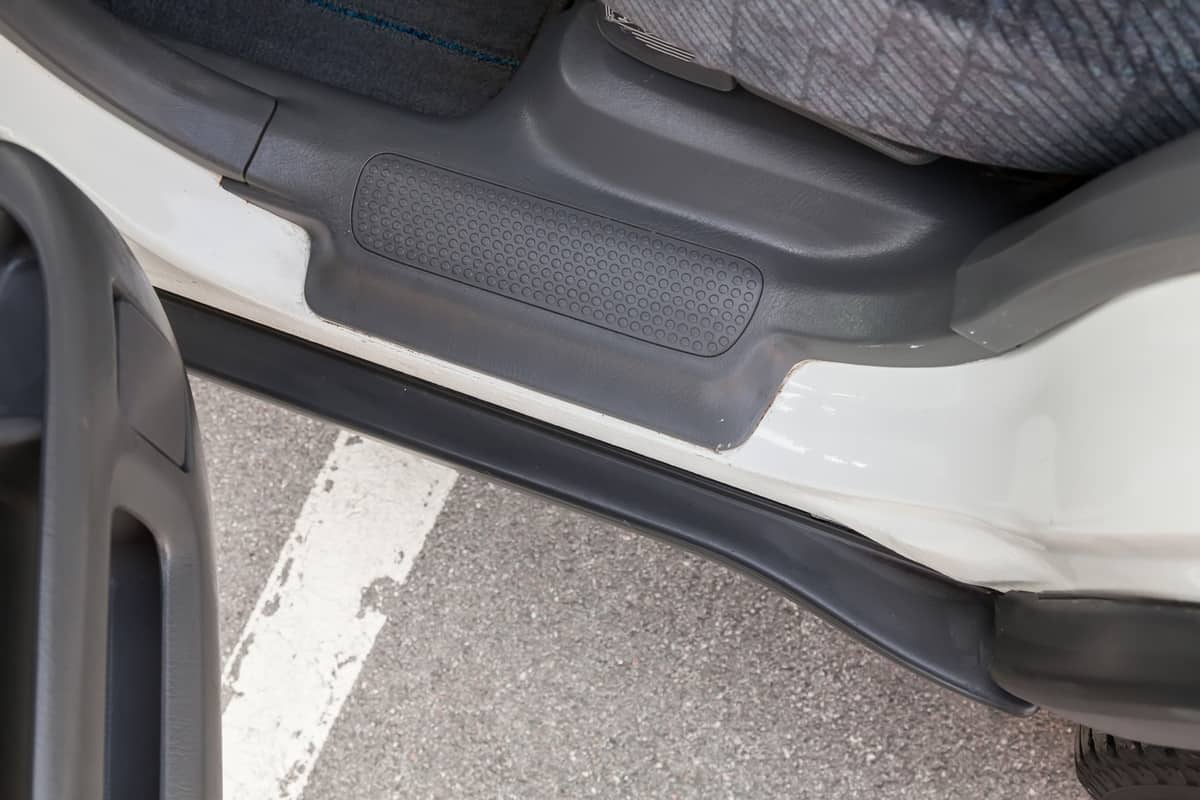
Some SUVs have plastic running boards that fade after a long time of exposure to the sun. The faded plastic on the running board looks chalky and worn.
It is important to be careful with the products you use for restoring a plastic running board. The wrong products can make a plastic running board slippery, thus becoming a source of accidents.
Even products that seem safe at first can become slippery when exposed to the sun or when they get wet. The products that we will use to restore a plastic running board are safe even when wet or after long exposures to the sun because they are water-based.
Materials needed
- All-purpose cleaner or waterless wash
- Clean microfabric towel
- Isopropyl alcohol
- Distilled water
- Empty sprayer
- Water-based hyper dressing
- Micro-fiber cloth applicator
The Shine Armor Waterless Wash & Wax ceramic coating hydrophobic top coat polish with polymer paint sealant detail protection is available on Amazon. Check it out through this link.
Steps to restore a plastic running board
- Spray all-purpose cleaner on the surface of the plastic running board to loosen dirt on the surface. Cleaning the surface thoroughly is important to give the dressing the best possible bond with the running board.
- Wipe off the surface with a microfabric towel until it is dry and clean. If the first application was not able to thoroughly clean the surface, do the same step once more. Dry it once more with a clean microfabric towel.
- Mix a one:one solution of isopropyl alcohol and distilled water into a clean sprayer.
- Spray the solution on the surface of the plastic running board. This is to remove any leftover all-purpose cleaner. Leaving residue from the all-purpose cleaner will affect how the hyper-dressing will restore the running board. Alternatively, you can use a TSP (trisodium phosphate) deck cleaner solution to get rid of any all-purpose cleaner residue.
- Wipe the surface dry of the alcohol and water solution—or wipe off the TSP solution, if that is what you used—until it is completely dry. Let it stand for a few minutes.
- Place some water-based hyper dressing on an applicator and rub it on the surface of the plastic running board. Apply an even layer until you’ve achieved a satin-like matte finish.
- Take another clean microfiber towel and wipe off any excess dressing from the surface of the running board. Continue wiping even after it is dry until the surface is dry to the touch.
This restoration can last for a few weeks to a couple of months, depending on how often the plastic running board gets dirty and how much it gets exposed to the weather, especially the sun.
The Chemical Guys TVD107 vinyl, rubber, and plastic long-lasting super shine dressing for tires, trim, and more is available on Amazon. Check it out through this link.
Are power running boards reliable?
Having running boards on your truck has its own set of advantages and disadvantages.
The running boards take away height clearance between the front and the rear wheels. On the other hand, they make it easy for women, children, and the elderly to get in and out of the truck.
Power running boards allow you to get the best of both worlds.
Power running boards are running boards that have been improved with motors and sensors. They automatically fold under the truck’s body when the truck is moving, and they automatically deploy when any of the doors are opened or unlocked.
Some power running boards can be programmed to respond to the passing of a leg and deploy the running board. There are models of power running boards that are controlled remotely, deploying and folding at a push of a button in the driver’s hands.
Power running boards can last anywhere between 3 to 5 years—or 60,000 miles—which coincides with the warranty range offered by different manufacturers of power running boards.
Conclusion
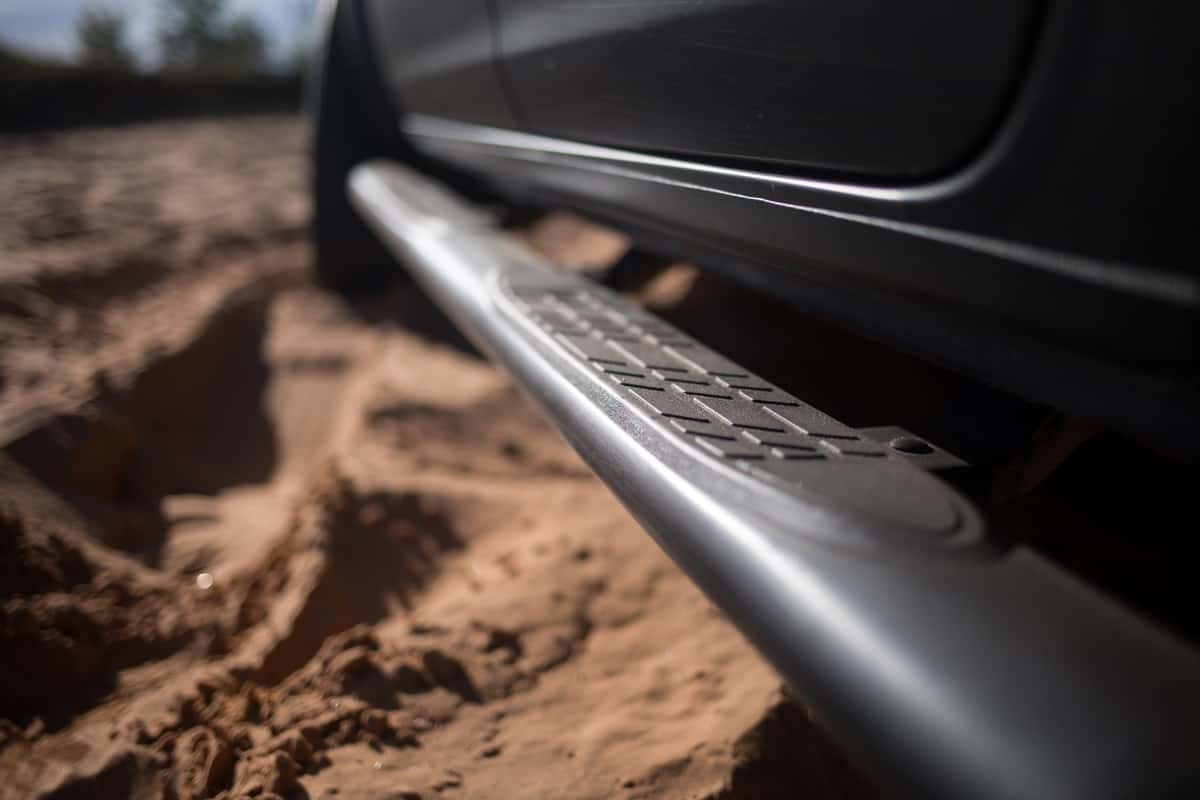
Running boards naturally become loose over time, especially if the truck is often used offroad. Installing weatherstrips to provide cushioning between the mounting brackets, the under chassis of your truck, and the running boards make the connection between the three firmer and less noisy.
If you enjoyed reading this article, you might find the articles below equally enjoyable to read:


